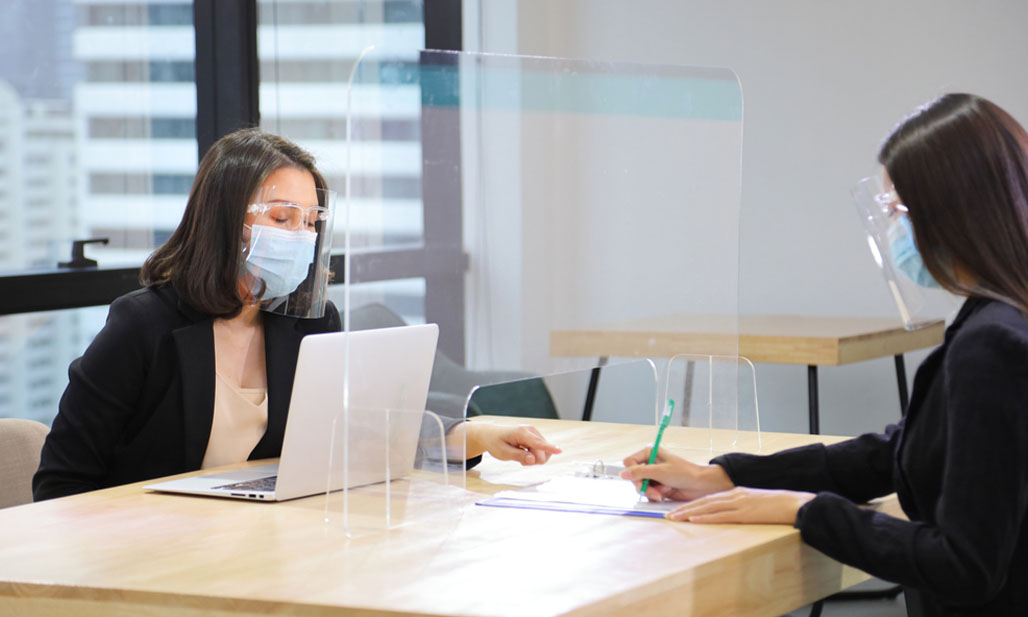8 June 2020

The Future of HR: How HR will Guide the Recovery
The Covid-19 experience has had a major impact on organisations and the individuals who work in them.
We have been worrying about our own health, and the health of our family and friends. Now as Lockdowns across the world are starting to be lifted, we need to think about what the future will be like.
Maybe we are excited to think about gong back to our favourite coffee houses, restaurants or pubs. The thought of going back to the activities that we like has been the ‘dream’ that has kept us going. Perhaps, we are looking forward to meeting up with our friends and enjoying some food and drink together. We are also imagining the freedom of going back to the places we want to go – and being able to do it! As Lockdown conditions ease we can feel close to getting back to normality….. and then we realise, there has been a dramatic change, and there is a new reality.
To help think about the change that we are going through, it is useful to relate it to a well-known theory. One of the best theories of change comes from Kurt Lewin. He presented his ideas in 1947, just after another world reaching calamitous event, the second world war. 
He describes how if we are planning a change we need to unfreeze the existing state, In his visual metaphor, we unfreeze the water, and change it into a new shape and then refreeze it in the desired new shape. Unfreezing is usually a planned action – but now, in 2020 it is a necessary action. New ways of working will be introduced.
Listed below are a few of the new work practices we need to develop:
- Social distancing
- Home working
- Remote teams
- Social Distancing
The scientists have told us to stay two metres apart. This the recommended minimum distance. We have probably all been out in the shops and felt other people were coming too close! As an employer we are going to have to manage this at work. Over the year’s psychologists have discovered that partitions between staff and customers can lead to poor behaviour from customers. The drive has been to reduce barriers and glass. Now in my local shops we can see workers wearing masks and gloves. The cashier is behind a window or barrier now. We have to queue two metres apart, and this is being monitored by security, only allowing a few people in the shop at a time. Some supermarkets are experimenting with one-way systems in the shop. This is fine for the organised and the list makers, but not so good for the impulse buyer.
What do you do if your business is sport or hospitality? You can probably work out ways to keep your shop staff behind barriers but what about your customers? How will it be possible to fill your stadium. A large stadium, like the new Tottenham football ground is designed to accommodate 60,000 people. How do you safely manage the flow of people when you need to keep the customers two metres apart? What will it mean for the safety of our staff – do we need full personal protection equipment for all roles, and can we force employees to wear it?
Home Working
In the workplace, we will see changes too. Jes Staley, the head of Barclays said this week “putting 7,000 people in a building may be a thing of the past”. Managing distancing at work and how to get to work will have an impact too. Many organisations will think that expensive offices in big cities are a cost they might be able to reduce. Adapting workplaces will be an expensive operation too. Another option is to change work operations to accommodate more people. Offices could start ‘shift’ systems (with proper cleaning in between shifts) to allow more people back at work, but not at the same time.
Jes Staley, in the same article talked about the future state. He said it was “remarkable” that 70,000 Barclay’s staff were now working remotely, showing it was possible to keep the business operating while in lockdown.
Another example of a recent change is that for the first time in its history, Lloyd’s of London has had to drop the “face to face” market, to go digital. (FT 17th May 2020) A spokesperson for Lloyd’s, understated the issue by saying “The environment is going to be adapted quite profoundly”.
What about working from home? Many organisations and staff felt they were ‘more productive’ working from home. With the right technology it can work well. In a recent survey, two thirds of people said they achieved more without meetings, unnecessary interruptions and travelling to work.
A different view has been expressed by Millennials (those under thirty years old). Some of these people worked well at home but 22% said they never wanted to work from home again. We hear of examples of millennials, in cities who are sharing a small flat. The organisation offered desks, chairs and extra monitors. The problem is – the flat is too small to fit the kit in, so they are forced to work from the bed with a laptop.
The age group thirty to forty-five with children at home, because the schools have closed, were able to manage their home time better. Fitting in ‘home schooling’ and working, by being organised and not having a two hour commute each way.
If we go back to the change model, we can see already that different demographics are looking for different things when the ‘new normal’ arrives. Some workers, who can work well from home will want to go back and some who find it more difficult have enjoyed the flexibility of home working.
Remote Teams
Everyone has now become an expert with tools like Zoom or Teams. Proficiency levels have risen, and we are using them for work and family get togethers. The issue of what to have in your background has been heightened! Vloggers and ‘insta’ stars tell us to have the camera at eye level. The laptop camera looking up at our chin or neck is not flattering. We need to have books or interesting backgrounds that are not too cluttered. The Zoom team meeting can be functional and involve the whole team. It is not unusual to see pets and children leaving and entering the picture. Here in the UK most people on zoom have adopted less formal clothing. I have not seen a suit and tie for a while!
The evidence seems to be that remote meetings can be a better use of time. What it really requires is a good meeting facilitator or manager. For cultures where ‘presenteeism’ has been the overriding culture, managers will need to adapt.
However, a note of caution from a study in Finland about remote teams. “More than half of the respondents felt isolated and longed for their co-workers”. HR will need to facilitate good practice for remote teams but also remember to support mental health. Employee Assistance Programmes (EAP’s) may be useful here.
Finally,
Having considered the changes that will be required HR will also need to consider the Employment Law implications.
Social Distancing – For example, shift working, to help with social isolating, might put the organisation in a difficult position because the required ‘shift’ times might be very different to the existing employment contract, that has been signed by both parties.
Home Working – is similar, can you enforce this legally? Should the employer be conducting a ‘workstation assessment’? Check on the personal work position of the employee for ergonomic suitability. It is probably not good for your back to be working all day from a laptop while sitting on your bed. Again, your contract, as required by Employment law will most likely specify a ‘place of work’ – and that is unlikely to be the home in most existing contracts.
Remote Teams – If you are in a remote team are you being set good objectives and how is your performance being appraised? What is your boss doing to keep you safe, mentally and physically?
If an organisation needs to make redundancies after lockdown – how will they demonstrate the job /task is redundant.


